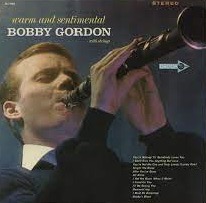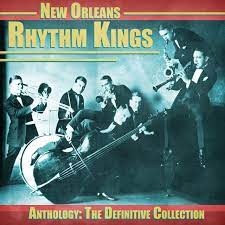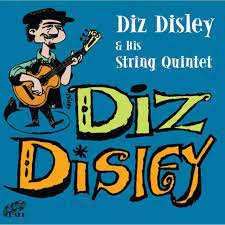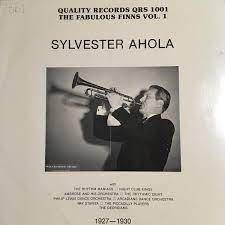
Daily Dose Of Jazz…
Robert Cameron Gordon was born June 29, 1941 in Hartford, Connecticut and taught himself by listening intently to the stylings of Jimmie Noone, Jimmy Dorsey and Frank Teschmacher, among others. He studied with Chicago clarinetist Joe Marsala. As a teenager he would go to Eddie Condon’s jazz club in New York’s Greenwich Village, sit at a table near the bandstand and nurse a Coke all night as he listened.
Early in his career, he played with Wild Bill Davison, Bobby Hackett, Zutty Singleton, Muggsy Spanier and had a long run with Jim Cullum’s Happy Jazz Band in San Antonio, Texas. Moving to San Diego, California in the 1970s, he played with numerous groups around the county. By the mid-1970s Gordon frequently recorded and toured with singer Leon Redbone, and appeared on the Johnny Carson Show. In 1979, the two survived injuries in a crash of a twin engine prop jet in Clarksburg, West Virginia.
In the late 1990s, Bobby joined the Roadrunners, a popular quintet on the West Coast festival circuit. During this time, he played with Marty Grosz, the Orphan Newsboys and Destiny’s Tots. His longest gig was at Milligan’s Bar & Grill in La Jolla, California leading a quartet.
Clarinetist and bandleader Bobby Gordon, who had been in poor health for years, transitioned from cardiopulmonary arrest on December 31, 2013.
More Posts: bandleader,clarinet,history,instrumental,jazz,music

Daily Dose Of Jazz…
Martin Abraham, better known as Chink Martin, on June 10, 1886 in New Orleans, Louisiana. He played guitar in his youth before settling on tuba as his main instrument. He played with Papa Jack Laine’s Reliance Brass Band around 1910, and worked in various other brass bands in the city in the 1910s.
In 1923, he traveled to Chicago, Illinois and played with the New Orleans Rhythm Kings with whom he made his first records. He also recorded guitar duets with Leon Roppolo, but these unfortunately were never issued. Returning to New Orleans with the Rhythm Kings in 1925, Martin made further recordings with them.
He also played with the Halfway House Orchestra with which he recorded on both tuba and string bass, the New Orleans Harmony Kings, and the New Orleans Swing Kings. In the 1930s, Martin worked as a staff musician at WSMB radio. He continued to play tuba for his entire career, though he also played and recorded on the double-bass from at least the 1920s onward.
He played with dozens of noted New Orleans jazz musicians, appearing on record with Sharkey Bonano, Santo Pecora, Pete Fountain, Al Hirt, and others. Tubist Chink Martin, who released one album under his own name on Southland Records in 1963, transitioned on January 7, 1981 in New Orleans.
More Posts: bandleader,history,instrumental,jazz,music,tuba

Daily Dose Of Jazz…
William Charles “Diz” Disley was born on May 27, 1931 in Winnipeg, Manitoba, Canada, where his parents worked. When he was four, they moved back to Llandyssil in Montgomeryshire, Wales and then five years later to Ingleton, North Yorkshire, England where his mother worked as school teacher. During his childhood he learned to play the banjo, but took up jazz guitar at the age of 15, after being exposed to the playing of Django Reinhardt. His neighbour Norry Greenwood taught him the chords to Miss Annabel Lee and Try a Little Tenderness in the summer of 1946.
Showing an early gift for drawing, he left school to enroll at Leeds College of Art, which had a reputation for student music making, in particular trad jazz. Soon he was playing in the Vernon City Ramblers and the Yorkshire Jazz Band with trumpeter Dick Hawdon and clarinettist Alan Cooper.
Post National Service in 1953, he resumed his studies in Leeds, and began selling cartoons to national newspapers and periodicals. A move to London, England saw him joining Mick Mulligan’s band with George Melly. He worked with most of the trad jazz bands of the day, including Ken Colyer, Cy Laurie, Sandy Brown, Kenny Ball, and Alex Welsh. In 1958, he formed a quintet to replicate that sound, employing violinist Dick Powell, guitarists Danny Pursford and Nevil Skrimshire, and a range of double bassists including Tim Mahn.
Disley started working as guitarist with a number of skiffle groups as it took over from trad jazz working and recording with Ken Colyer, Lonnie Donegan, Bob Cort, Nancy Whiskey. He would go on to persuade Stephane Grappelli to return to public performances using an all-strings acoustic line-up, recreating the spirit of the Quintette for a new generation of listeners. This began a collaboration between Grappelli and the Diz Disley Trio, sometimes billed The Hot Club of London, and after twenty years he broke his wrist when he was knocked down by a motorcycle. In 1978 Grappelli, Disley, and others were invited by David Grisman to contribute the score to the film King of the Gypsies. Grappelli and Disley had walk-on parts as gypsy musicians and were suitably attired for the occasion, but the soundtrack to the movie was never released.
In the 1980s Disley formed a working partnership with gypsy jazz guitar prodigy Bireli Lagrene, then put together a club quintet for Nigel Kennedy, and the Soho String Quintette that recorded Zing Went The Strings for Waterfront Records.
In the 1990s, he spent several years in Los Angeles, California and delved into blues and country-rockabilly. He moved to Spain in the 2000s and painted several portraits of jazz musicians in the cubist style. In early 2010 his health took a turn for the worse, and he was admitted to the Royal Free Hospital in Hampstead, England on February 2nd. Guitarist Diz Disley transitioned on March 21, 2010.
More Posts: bandleader,guitar,history,instrumental,jazz,music

Daily Dose Of Jazz…
Buddy Petit was born Joseph Crawford on May 25, 1897 in White Castle, Louisiana. His early life is somewhat mysterious but he was adopted by trombonist Joseph Petit, whose name he took.
Taking Freddie Keppard’s place in the Eagle Band, a place earlier held by Buddy Bolden, when Keppard left town. Briefly lured to Los Angeles, California by Jelly Roll Morton and Bill Johnson in 1917, but objecting to being told how to dress and behave differently from what he was accustomed to he returned to New Orleans, Louisiana.
Buddy spent the rest of his career in the area around greater New Orleans and the towns north of Lake Pontchartrain, not venturing further from home than Baton Rouge and the Mississippi Gulf Coast.
Okeh Records offered him a chance to record on their 1925 field trip to New Orleans, but Petit held out for more money and was never recorded. Danny Barker and Louis Armstrong said that it was a great loss to jazz history that there are no recordings of Petit.
After over-indulging in food and drink, cornetist Buddy Petit, which was sometimes spelled Buddie, transitioned on July 4, 1931.
More Posts: cornet,history,instrumental,jazz,music

Daily Dose Of Jazz…
Sylvester Ahola was born on May 24, 1902 in Gloucester, Massachusetts. His parents, Sophia and John Ahola, were born in Finland. He became most popular in England rather than the United States.
He first began performing with Frank Ward and His Orchestra. In 1925 he started playing with Paul Specht and His Orchestra, with whom he did a two-month-long tour of England that following year. For the next couple of years he performed with bands like The California Ramblers and Adrian Rollini and his band.
1927 saw Ahola moving to England and landing a job playing with the Savoy Orpheans. He went on to gig with Bert Firman and Bert Ambrose. The British Musicians’ Union, unhappy to see a foreigner land so many jobs and attain so much success, effectively prohibited him from playing with anyone other than Bert Ambrose. This forced him to eventually leave in 1931 and return to New York City.
Throughout the rest of his career he never again achieved the level of success he had enjoyed during his time in England. Trumpeter and cornetist Sylvester Ahola, also known as Hooley, transitioned on February 13, 1995.
More Posts: bandleader,cornet,history,instrumental,jazz,music,trumpet



